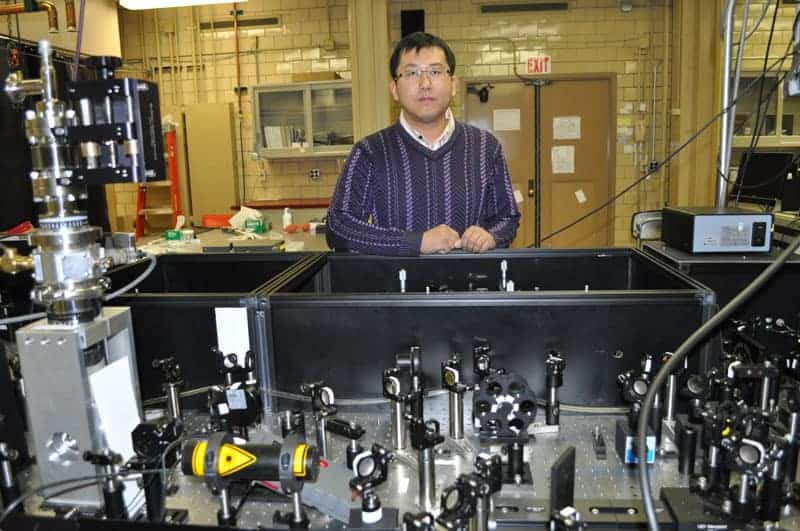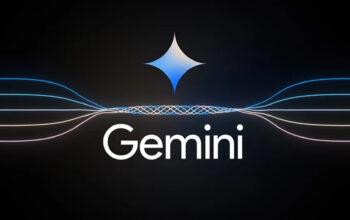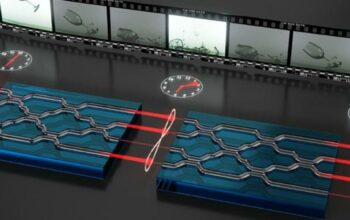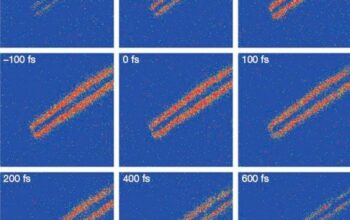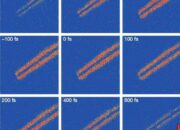Graphene, a remarkable two-dimensional allotrope of carbon, has garnered significant attention since its isolation in the early 2000s. It is often regarded as a wonder material, a title that belies its complexity. Its atomic lattice, composed of a honeycomb arrangement of carbon atoms, endows it with a plethora of unique properties, including extraordinary electrical and thermal conductivity, mechanical strength, and flexibility. One of the most intriguing discoveries associated with graphene is its capacity to emit infrared light, adding yet another layer to its multifaceted character.
The emission of infrared light can be likened to a painter’s palette, where various colors reflect different wavelengths of light. In the realm of condensed matter physics, infrared emissions are emblematic of vibrational and electronic transitions within the material. When electrons in graphene are excited, they can transition between energy levels, subsequently releasing photons in the infrared spectrum upon returning to their ground state. This phenomenon is significant because infrared light occupies an essential niche in both natural and technological frameworks. It is pivotal in applications such as thermal imaging, telecommunications, and various sensing technologies.
The mechanism by which graphene emits infrared light is intrinsically linked to its unique electronic structure. Graphene’s π-electron cloud is highly mobile, allowing for exceptional conductivity. When electrons are excited by thermal energy or external stimuli, they can move to higher energy states, creating a non-equilibrium condition. Under these circumstances, the relaxation of these excited electrons back to their ground states, which results in the emission of infrared radiation, is a compelling demonstration of phonon-electron interactions. Hence, graphene acts not merely as a conduit for electrical charge; it metamorphoses into an active medium for light emission.
It is crucial to understand the conditions under which graphene emits infrared light. At room temperature, the spontaneous emission tends to be weak due to the relatively low electron-hole pair density. However, when doped or under specific conditions, such as those found in laser excitation or under a strong electric field, graphene can enhance its emissive properties. The interplay between doping concentrations and external excitations serve as a crucible for optimizing light emission, making it a fertile ground for further research and innovation.
The implications of graphene’s ability to emit infrared light extend well beyond basic research. For instance, in the realm of photonics, graphene potentially serves as a core element in the development of faster and more efficient electronic and optoelectronic devices. With the growing demand for devices that can operate at higher speeds and lower power consumption, integrating graphene’s infrared emission capabilities into semiconductor technologies could pave the way for breakthroughs in data transmission and processing. Furthermore, applications in imaging technologies, such as infrared cameras capable of detecting signatures of heat, depend on materials capable of infrared emission. Graphene’s combination of high thermal conductivity and its emission properties may lead to cameras with improved responsiveness and sensitivity.
Moreover, the field of telecommunications may also benefit from the integration of graphene due to its potential use in modulators. The capacity to manipulate light on a nanoscopic level has become increasingly pertinent as data rates soar into the terabits per second range. Graphene’s unique properties allow for tunability in its infrared emissions, rendering it an excellent candidate for next-generation communication devices. It could facilitate the development of compact photonic devices that can efficiently convert electrical signals into light and vice versa, thus redefining the landscape of high-speed communication systems.
In addition to its technological applications, graphene’s infrared emission capabilities attract attention in the context of materials science and nanotechnology. The strategic manipulation of its crystalline structure could lead to the development of novel coatings or materials that can selectively emit infrared light. This could have far-reaching implications, such as in thermoregulation applications, where controlled emission could help to maintain optimal thermal conditions in various settings, ranging from building materials to wearable technology.
Nevertheless, important challenges remain. Engineering graphene to produce consistent and reliable infrared emissions requires comprehensive understanding and control over its fabrication processes. Variations in the quality of graphene, whether due to defects in the lattice or impurities introduced during synthesis, can significantly affect its emissive properties. Further research is warranted to refine production techniques and enhance the uniformity of graphene-based materials.
Ultimately, the discovery that graphene can emit infrared light epitomizes the material’s multifarious nature, serving as a metaphorical bridge connecting disparate fields of study—from physics to engineering and materials science. As researchers continue to unravel the mysteries surrounding this two-dimensional marvel, the potential applications seem as boundless as the empirical questions that arise from its study. The intricate dance of electrons and phonons in graphene suggests a future wherein this extraordinary material may illuminate pathways not yet envisioned, thereby transforming our technological landscape and expanding the horizons of human ingenuity.
In conclusion, graphene’s ability to emit infrared light is not merely a testament to its unique electronic and thermal properties but a glimpse into the future of materials science and technology. As researchers delve deeper into the nuances of its behavior, the synthesis of new ideas and innovations will likely continue unabated, ensuring that graphene remains at the forefront of scientific exploration for years to come.
